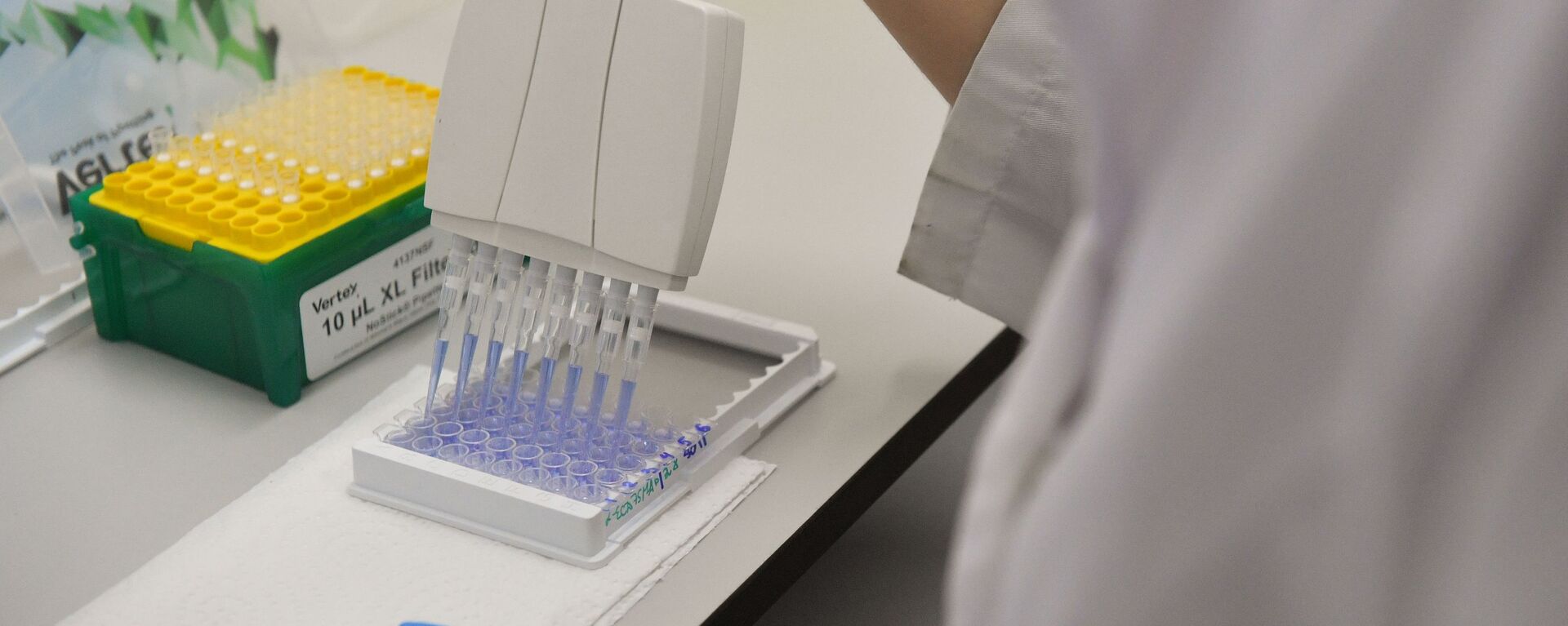https://sputnikglobe.com/20250516/precision-weapon-to-kill-cancer-developed-by-russian-scientists-1122068822.html
Breakthrough in Cancer Cure: Russian Lab Creates ‘Diving Antibodies’
Breakthrough in Cancer Cure: Russian Lab Creates ‘Diving Antibodies’
Sputnik International
Russian scientists are developing a new method of curing cancer, revealed Alexander Sobolev, corresponding member of the Russian Academy of Sciences and head of RAS’ Molecular Genetics of Intracellular Transport laboratory.
2025-05-16T18:54+0000
2025-05-16T18:54+0000
2025-05-16T18:57+0000
beyond politics
science & tech
russian academy of sciences (ras)
cancer
cancer treatment
https://cdn1.img.sputnikglobe.com/img/07e5/04/1d/1082760839_0:100:1921:1180_1920x0_80_0_0_41b5bcb716febd5350449b0c6f0736d5.jpg
The researchers, Sobolev told Scientific Russia magazine, have developed artificial protein molecules that can “identify” cancerous cells and enter these cells’ nuclei via intracellular transport mechanisms.These artificial molecules could potentially be used to carry toxic agents such as radioactive isotopes that would ensure the destruction of cancerous cells with minimal risk of affecting neighboring non-cancerous cells.Dubbed “modular nanotransporters”, these tiny cells consist of several modular blocks that can be altered depending on the task at hand.For example, Sobolev said, the modular transporter currently being tested by Rosatom consists of four modules:All of these stages have already been tested and demonstrated during experiments, Sobolev noted.The safety of the new method had also been confirmed by previous tests of a similar modular nanotransporter involving the P. Hertsen Moscow Oncology Research Institute and A. Tsyb Medical Radiological Research Center.Having realized that virtually any kind of payload can be attached to the molecules they have developed, the researchers also came up with a concept of a “diving antibody”: an antibody or a molecule similar to it that could “dive” into a target cell and interact with the target protein within.Thus, another module was created: a molecule similar to an antibody that could interact with target proteins.One such “diving antibody” has already proven capable of protecting cells from oxidative stress.Another “diving antibody” can identify coronavirus proteins and direct intracellular ferments to destroy that protein. According to Sobolev, this method could be used to create a cure for COVID, “and not just for COVID.”In order for these creations to actually become medication, however, they first need to undergo preclinical and clinical trials.The modular nanotransporter method is specifically designed to deal with micro-tumors that are especially difficult to detect and hard to get rid of.The researchers also intend to pursue other directions of investigation that emerge during their studies, exploring potential new applications for these artificial molecules.
https://sputnikglobe.com/20241201/russian-scientist-on-cancer-vaccine-melanoma-metastases-simply-disappear-after-its-use-1121055227.html
2025
News
en_EN
https://cdn1.img.sputnikglobe.com/img/07e5/04/1d/1082760839_106:0:1813:1280_1920x0_80_0_0_4737ac610ee03d39dbf2ccf8d0ac2048.jpg
russia cancer treatment research, cure for cancer
russia cancer treatment research, cure for cancer
Russian scientists are developing a new method of curing cancer, revealed Alexander Sobolev, corresponding member of the Russian Academy of Sciences and head of RAS’ Molecular Genetics of Intracellular Transport laboratory.
The researchers, Sobolev told Scientific Russia magazine, have developed artificial protein molecules that can “identify” cancerous cells and enter these cells’ nuclei via intracellular transport mechanisms.
These artificial molecules could potentially be used to carry toxic agents such as radioactive isotopes that would ensure the destruction of cancerous cells with minimal risk of affecting neighboring non-cancerous cells.
Dubbed “modular nanotransporters”, these tiny cells consist of several modular blocks that can be altered depending on the task at hand.
For example, Sobolev said, the modular transporter currently being tested by Rosatom consists of four modules:
All of these stages have already been tested and demonstrated during experiments, Sobolev noted.
The safety of the new method had also been confirmed by previous tests of a similar modular nanotransporter involving the P. Hertsen Moscow Oncology Research Institute and A. Tsyb Medical Radiological Research Center.
Having realized that virtually any kind of payload can be attached to the molecules they have developed, the researchers also came up with a concept of a “diving antibody”: an antibody or a molecule similar to it that could “dive” into a target cell and interact with the target protein within.
Thus, another module was created: a molecule similar to an antibody that could interact with target proteins.
One such “diving antibody” has already proven capable of protecting cells from oxidative stress.
Another “diving antibody” can identify coronavirus proteins and direct intracellular ferments to destroy that protein. According to Sobolev, this method could be used to create a cure for COVID, “and not just for COVID.”
In order for these creations to actually become medication, however, they first need to undergo preclinical and clinical trials.
The modular nanotransporter method is specifically designed to deal with micro-tumors that are especially difficult to detect and hard to get rid of.
The researchers also intend to pursue other directions of investigation that emerge during their studies, exploring potential new applications for these artificial molecules.


